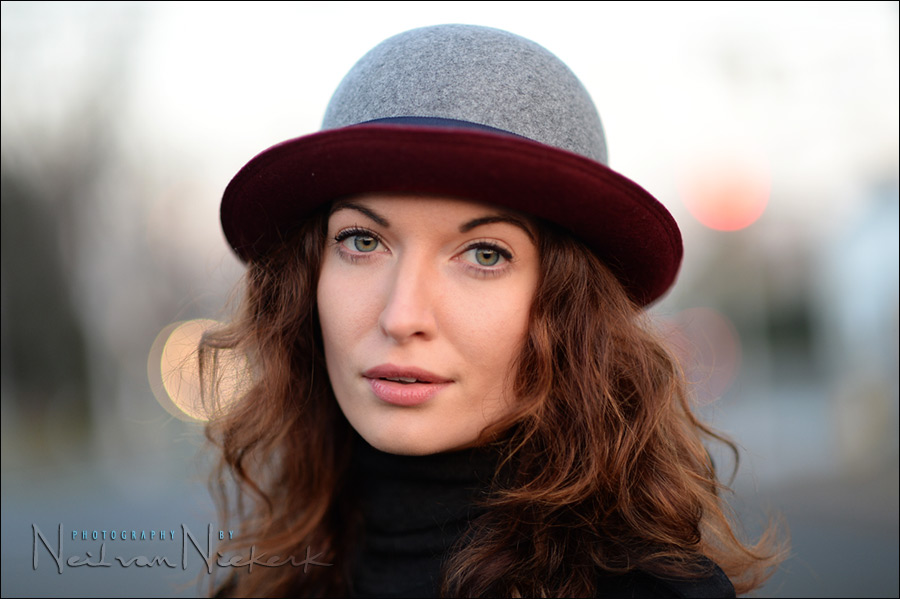
85mm – The best lens that could change your portrait photography
If that hat seems familiar, yes, Elle was the model in the series of photographs for the Nikon Df review article. For some of the sequences of photos that we shot, I used the 85mm lens, wide open. This had the effect of just melting the background. You can pretty much shoot anywhere, and make the background look good and non-intrusive.
While a 70-200mm f/2.8 lens can be even more effective in controlling the background, the shorter focal length, an 85mm lens can make this somewhat easier in some respects. Specifically, it’s a smaller lens and less intrusive when you photograph portraits. It’s less “threatening” to the person you’re photographing, and easier to carry around.
Just how well can you blur the background when shooting wide open with an 85mm prime lens? Compare the photo above with the pull-back shot, taken with an iPhone from the same spot …
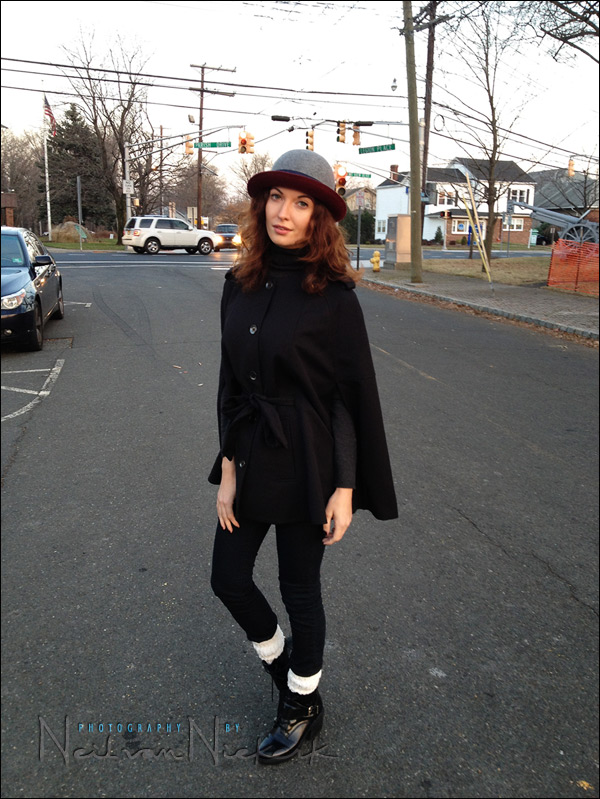
The pull-back shot should tell you the entire story of just how the 85mm lens works its magic! That’s exactly where we stood for the shot above. I was using the traffic lights to create some pleasant colored effects in the background. Yes, you really can shoot pretty much anywhere when you use a wide open aperture, whether f/1.8 or f/1.4 or f/1.2
We just used available light here. No flash. With the slowly setting sun, we had lovely soft light falling on Elle.
camera settings: 1/400 @ f/1.4 @ 400 ISO
Nikon Df (affiliate); Nikon AF-S 85mm f/1.4G (affiliate)
More examples of portraits taken with an 85mm lens

The pull-back shot below will explain the background here. That orange safety netting. With the super-shallow DoF, the netting merely becomes an interesting background, and not an ugly intrusive background. (Excuse the image softness in the pull-back shot. Somehow, I didn’t keep the camera still for this one.)
camera settings: 1/500 @ f/1.4 @ 400 ISO
Nikon Df (affiliate); Nikon AF-S 85mm f/1.4G (affiliate)

An available light portrait in the studio, using the window light as main light. More details about the setup are described here: Direction of light – Using available light in the studio.
Even though this was a posed shot of Anelisa, the passerby added an interesting incongruous element while shooting out on the street. Again, because an 85mm lens is relatively compact as a portrait lens, it is ideal for this kind of photography out on the street. And then of course, there is the dreamy bokeh.
Because an 85mm lens is such a compact portrait lens, it is also ideal for informal portraits.
This example is from the article on portrait lighting setup in limited space / home studio. The model’s eyes are half the impact with this photo. The way the super-sharper areas gently slide into the pleasantly soft areas, really helps accentuate those sharply focused areas, and draw your attention in.
Recommended 85mm lenses
The faster lenses are a bit more spendy than the f/1.8 optics, but the change in depth-of-field is incremental. You’d get a similar shallow depth-of-field effect at f/1.8 so if your budget is limited, f/1.8 lenses are excellent choices too.
- Canon RF 85mm f/1.2 USM – B&H / Amazon
- Canon EF 85mm f/1.8 USM – B&H / Amazon
- Canon EF 85mm f/1.2L II USM – B&H / Amazon
- Nikon Z 85mm f/1.8 S lens – B&H / Amazon
- Nikon AF-S Nikkor 85mm f/1.8G – B&H / Amazon
- Nikon AF-S Nikkor 85mm f/1.4G – B&H / Amazon
85mm on a Full-frame camera vs. 50mm on a Crop sensor
Photographers with crop-sensor cameras will of course wonder if a 50mm f/1.4 will give similar results. Since the crop will force a different perspective for the same composition, effectively giving that longer focal length’s field of view, you’d get a similar effect with shallow depth-of-field.
While I think every photographer should have a 50mm lens in their bag somewhere, the 85mm on a crop sensor camera will be even more awesome in giving that shallow DoF, with the longer focal length giving a more pleasant perspective for close-up portraits.
Direction & Quality of Light
I wanted to distill the essence of what we, as photographers, work with – light! Before we can truly grasp on-camera flash and off-camera flash, and really, any kind of photography, we have to be aware of the direction and quality of light. We need to observe the light that we have, and then decide how best to use it, or enhance it.
With this book, I try my best to share those “aha!” moments with you, and I do believe this book can make a difference to your photography.
The book is available on Amazon USA and Amazon UK, or can be ordered through Barnes & Nobles and other bookstores. The book is also available on the Apple iBook Store, as well as Amazon Kindle.
Summary
The 85mm prime might seem like an overlap lens if you already have a 70-200mm zoom, and to an extent it is, but the 85mm is so much easier to work with. It is lighter and smaller. The 85mm also allows a more direct way of working with your subject, without the massive lens getting between you and your subject.
Even in studio setups, this lens can help by lending its specific qualities to your images with its very shallow DoF.
If you currently only have a kit lens or a zoom with a slow max aperture, and you’re longing for a lens that gives this kind of selectively focused impact, then the 85mm prime is your best choice as a step up. Careful use of this lens will really help elevate your portrait photography.
Reviews of 85mm lenses
- review: Canon EF 85mm f/1.4L IS lens
- review: Canon EF 85mm f/1.4L IS lens — bokeh comparison
- review: Sony FE 85mm f/1.4 GM Lens
- review: Sony FE 85mm f/1.8 Lens
- Sharpness comparison — Sony 85mm f/1.4 GM vs Sony 85mm f/1.8
- review: Nikon 85mm f/1.8G lens
- review: Nikon 85mm f1.4G lens
- review: Fuji XF 56mm f/1.2 R
- review: Zeiss Otus 85mm f/1.4 … vs Canon and Nikon
Related articles
- An informal portrait with the 85mm lens
- The need for fast prime lenses in your camera bag
- 85mm f/1.4 portraits in the studio
- review: Zeiss Otus 85mm f/1.4 vs Canon and Nikon
- Lens review: sharpness – Sony 85mm f/1.4 GM vs Sony 85mm f/1.8
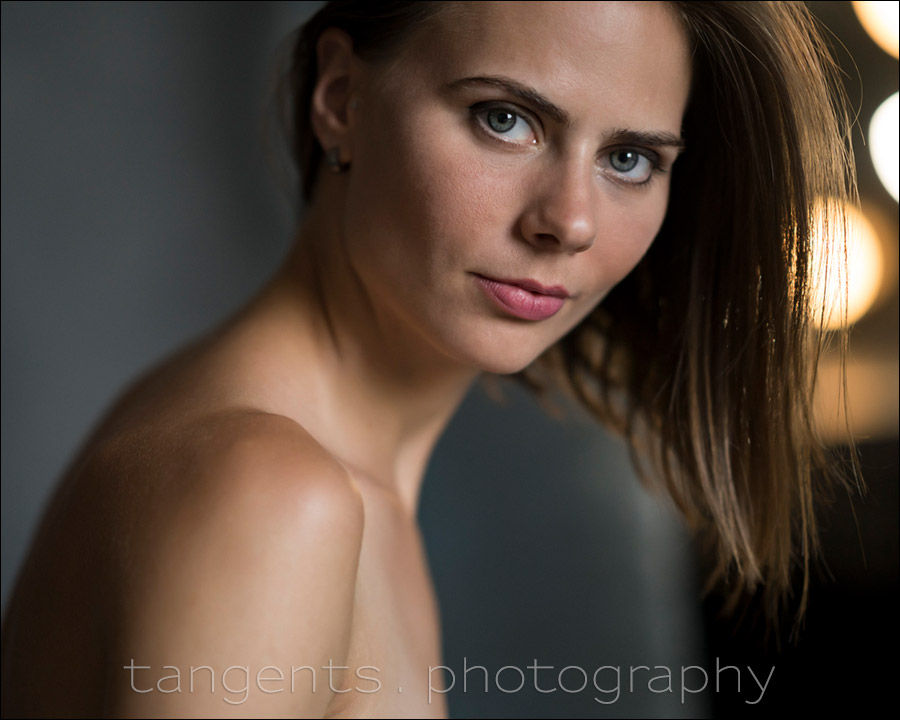
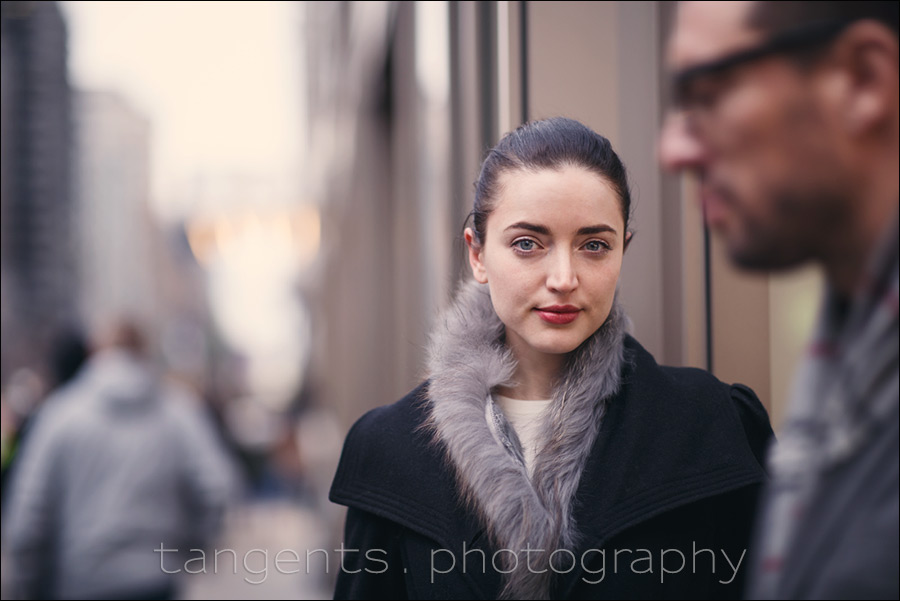

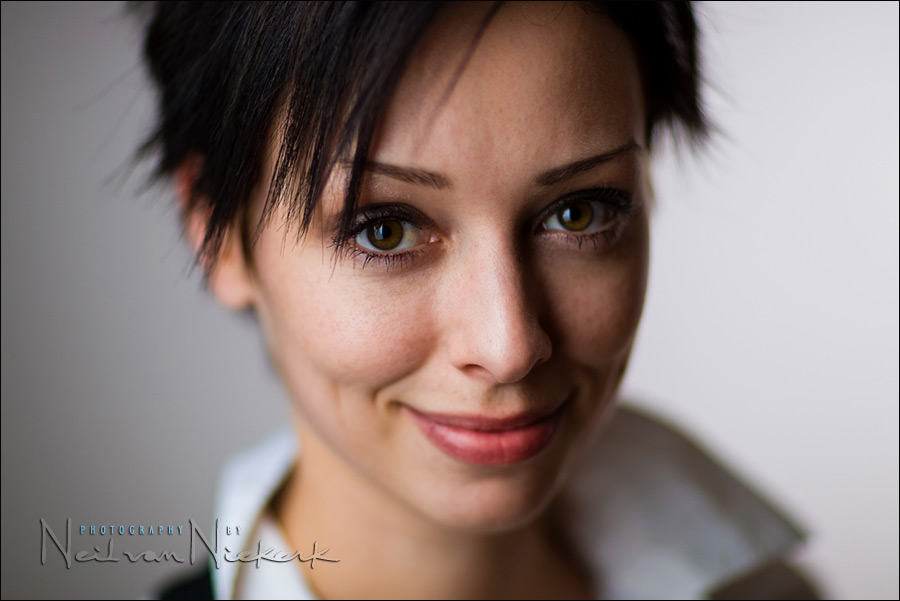

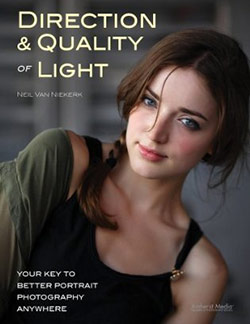
I agree 100% Neil, the 85mm is far and away my favourite portrait lens! I have the 85 f1.8 AFS and as you say it is an optical gem.
Neil
HOW you show the difference is equally beautiful as the difference you show. Way to go.
Sean
I have the 1.8 G and I feel that I am getting too much flare even without any filter on the lens. Could you comment on this?
Post an example to the Forum for us to see, and to see the scenarios you’re shooting under. Also, do you use a lens hood?
As convenient as zooms are, I still prefer primes for portrait work. Now if only Nikon would do a fast 135mm with the same formula as their 85s.
Neil said: “While I think every photographer should have a 50mm lens in their bag somewhere, the 85mm on a crop sensor camera will be even more awesome in giving that shallow DoF.”
Neil, can you please explain why the 85mm would be preferable to the 50mm on a crop sensor camera? Thanks!
Justin
With a crop you need to multiply the f stop too
For the DoF, yes. Not for exposure calculation though.
The ideal portrait focal length (on a full-frame camera) has traditionally been regarded as 100mm. The wider your focal length, and still keeping to a full headhshot, the more prone you will be to unflattering perspective distortion on the face. (Out-of-proportion nose, etc).
You can see this already kicking in mildly in the last photo (studio shot), where I used the Canon 85mm f/1.2 (used at f/1.4) for a tight headshot.
So already the 85mm lens is perhaps on the short side for such a tight headshot. A 100mm f/1.4 would be perfect.
With that idea in mind, the effective focal length you’d get with a 50mm lens on a crop sensor, would be just little bit wider again than 85mm. Yet, if you used an 85mm f/1.8 lens on a crop-sensor camera, and stepped back to frame for that headshot, you’d effectively get the same perspective as 1.5 x 85 = 128mm
I have a manual focus 85mm 1.4 which I attempt to use but when well open, focusing is difficult because of the shallow depth of field. Seeing your results, it is definitely worth pursuing. Would Live View help?
@Chaim- Do you have a lens hood?
i also have a 85mm 1.4 manual ony! it works verry well, and i wouldnt change it for a upgrade to autofocus unless sharpness is improved and bokeh quaity is better. i have the 5D mii and the samyang and in the beggining i had trouble focusing, but then i stumbled over a focusing screen (eg-s) and it makes it so much easier and i hit focus 99% of the time
Please visit https://www.flickr.com/photos/robin_antonsen/ to see my pictures! the last ones are from the samyang
Howard, even using Live View is going to be much clumsier than using an AF lens. Time for an upgrade?
Yes, I’ve been thinking about the Sigma. $$$ At some point, yes. Wow! It’s been 2 years. didn’t see your reply when you posted.
Neil, I use a Nikon 70-200, 2.8 lens for portrait work. I can set the focal length to 85 mm and assume get the same effect as a 85 mm lens. So, do I need to purchase a 85 mm lens?
Thanks
Hi Neil,
During the last couple of weeks, I was contemplating whether I should go forward with the 85mm f/1.8.
Well, your brief article once again, tipped the point. I am going forward :-)
Thank you!
Neil,
Nice write up on the 85mm and the pull back shots show that just about anything can be used as a background when proper f stop and FL is combined. The 85mm lens is responsible for my love of the 135mm (on a full frame body) because I used the 85mm lens on a crop sensor for so long.
Justin, surely one of the reasons that Neil mentions that the 85 shines on a crop sensor is perspective. You are forced to step back further from the subject, this enhances facial features….like big noses not being made bigger :)
Rudy
I have the 70-200mm f2.8, and I have been using it for portraiture. it’s a good lens as Neil has stated previously. However, its minimum focusing length is long (about 4.6 feet), so sometimes something can get between me and the subject, or I don’t have that distance.
The 85mm f1.4 not only is lighter and smaller, but its minimum focusing length is about half of the 70-200mm f2.8.
The photo where she’s squatting in front of some orange netting which then turns into this pleasant background is all you need to sell this lens.
Neil,
Have you used the Sigma 85 1.4???? It seems like a great lens for hundreds less than the Nikon 1.4. ty, Mike
I have used it, and it’s a fine lens, but the Nikon still gets the edge in terms of sharpness, IMHO.
If a non photographer looked at 2 images, one taken with a Canon 85mm 1.8 and the other taken with a Nikon 85mm 1.4G at 1.8 ( both full frame DSLR’s) and everything was the same i.e. distance to subject, lighting etc, in your opinion, do you think that they would be able to tell the difference ? Thanks. Darrren. :-)
No they won’t.
Nice article Neil.
I have the Nikon 85mm 1.8G, and I just fell in love with it. I am using it on a D7000, and couples great. It is so great, I would not mind walking around with it all day (even though it is a bit long for DX). It has allowed me to produce some great candid shots instead of posed shot. Just like everything about this lens, even on higher ISO it is just fine.
After this one I had purchased the 50mm 1.8G, though I am not too happy with it (IQ wise, not focal length).
The 85 is so much better (in my case/opinion), and highly recommend it to anyone!
For a few years I gave the photography a rest…pulling out my cameras every once in a while and pondering whether or not to take it up again. Then one day I did, and I did having just purchased the ‘nifty fifty’, the ‘plastic fantastic’ Canon 50mm f/1.8 II. That lens and *its* shallow depth of field blew me away! I hadn’t experienced anything like it in my personal photography before. As a result, I invested heavily in faster, better optics, went digital, and put my interest and involvement in photography firmly back on line. Fast, sharp lenses provide defining moments for the photographer!
Ótimo Artigo. Simples e Efetivo.
Uso uma 50mm f/1.8 Canon em uma T1i (APS-C), ela funciona como uma 85mm e relamente, quando se tranta de retrato é uma lente fantástica… só é complicado para street, mas ai uma 28mm f/1.8 se sai melhor.
Aloha Neil,
I recently used the 85MM 1.4, and came to the same conclusions. This lens is absolutely amazing! Been using the 70-200MM with good results, but the size and weight of the larger lens can become a bit tiresome. The 85 was a dream, and the results were superb.
Hope Santa recognizes my good behavior this year!
Hello Neil,
Thanks so much for sharing some great examples. I currently use a 50mm f1.4 with my D7100 and I get some lovely portraits. I was wondering if I should buy the 70-200 or the 85mm and I am convinced now that the 85mm 1.4 is the best choice for portrait and carrying it around.
Keep up the great work!
Great timing on the article. I just did a portrait session with the 85mm f/1.4 AFD on my D3s. I wanted to shoot in my relatively short studio with Christmas lights blurred out into bokeh balls behind my subjects. I thought I’d try my GH2 with the fabulous 25mm f/1.4 (which I use primarily for video), but I could not knock the background out of focus as much as I wanted. The 85mm on my FF D3s got the job done.
If I had room, the 70-200mm works nicely. Since we do a lot of portraits on Oahu’s beaches, I’m likely to leave that lens on my camera. But, when I get the chance, I really enjoy putting the “cream machine” into service.
Even if I don’t need/want the shallow DOF, the 85mm is a great lens. Very sharp stopped down. It’s become my studio favorite for headshots.
As always, thanks for your generosity to the photographic community!
The Canon 85mm f/1.2 II has been a wonderful lens. The relatively tiny 135mm f/2.0 is also one of my all time favourite portrait/sport lenses. And on occasion the 300 f/2.8 can be stunning for portraits.
My all time favourite for full frame 35mm? The Leica 75mm APO Summicron f/2.0 ASPH on the Leica M.
Best blogger ever! Neil is the man!
Neil,
Love the pull back shots ! So I have a question…With such shallow aperture (like 1.8 and 1.4), how do you maintain focus on the eyes ? What I do is to use aperture priority, set the aperture, with center focus, I half press shutter on eyes and pan down. Is that a good way to do this ? Manual focus might slow things a bit, so curious what your preference is .
thanks !
Sri
You need to be careful with shallow depths of field. Focus and recompose method is shaky. The plane of focus in curved so with only a 1/2 inch in focus, chances are great that critical focus will be missed.
Skill is required!
Yeah, both Nikon or Canon 85mm fast lens are awesome in term of I.Q and good investment for full-time and well profited photographers but way over priced compare vs. f1.8 cheaper model for seasonal photographers. I have own both of these versions and the Zeiss 100mm Makro. I took real event pictures – church, school, festival, marathon… and also testing pictures compare side by side with condition of everything the same except difference lens for about six months. I came up with get rid of expensive f1.2 version b/c with customer naked eyes, they couldn’t even tell me the differences of these event pictures. However, if you use in static studio lighting, the f1.8 cheaper lens is a tad of cooler and tad less sharp vs. thousand dollars more f1.2 lens if you compare apple to apple. Of course, for the f1.8 version I need to develop a batch post processing method to adjust all pictures color a bit warmer to match with the more expensive version f1.2 lens and that post processing doesn’t take more than 15mins of my post processing time at all. I can let it run by my PC and go get a cup of tea. Come back, all done!!!
Neil, do for you think it would be worth investing in the 85 mm lens for portraits if I already have the excellent Canon 100 mm 2.8 L macro lens?
There’s enough (approximate) overlap there in the focal length, and the lens is compact enough, that you’d have less compelling reason to get an 85mm lens too.
I have both. Had the 85mn for a while. Just got the 100nm macro for doing just macro shots on my FF 6D. Will help extend me on my crop body as well as its now my longest lens (still saving up for the high cost of a 70-200). But I agree, many folks get the 100mm L macro to get the best of both macro and portrait lens. The 100mm just doesn’t go down to f1.8 so will take a little more to blow out background. If u mainly do portraits and on a budget get the 85. If you want to do closeup work/product shots/flowers then get the 100mm L.
My 85 1.8g has been magical for me. Very glad I purchased it.
Neil (et al)
I use my 70 – 200 f/2.8 for portraits and love it. Recently I have done a fair few profile photos for work colleagues. My usual course of action is to focus on the nearest eye, but at f/2.8 I notice even the tip of an average nose is out of focus.
I assume therefore that the larger the focal length the less noticeable this effect will be? Unfortunately I don’t have a sample here right now to quote actual focal length but I’m guessing very close to 100mm as I tighten the shot a little from my position. The background is super soft which is great and has prompted more that one subject to ask “how do I do that?”
Or is the answer simple a slightly larger aperture?
I have a Canon 60D (crop sensor) and both the Canon 50mm f/1.4 and 85mm 1.8. When I quickly look through a library of images in Lightroom, the 85mm shots jump right out at me. They’re amazing. I don’t know exactly what it is about the lens, but the shots have a strong look to them that appeals to me above and beyond any other lens I’ve ever used. (OK, that doesn’t account for too many lenses, but the 85 stands out.)
I actually used the 85mm lens today to shoot my niece’s gymnastics meet. Bad lighting, high ISO needed, and the 85mm was perfect for me. Got some amazing shots with it that any f/2.8 lens wouldn’t have achieved. So it’s also useful for other things, too. =)
Hello Neil,
I have canon 85 1.8 and its a fantastic lens. Please share your opinion that getting that Shallow DOF wide open at 1.8 can lead to softer image on this lens as its been said that we need to stop down (2 stops) the lens for crisp image. Also, I see that you shot the 85mm 1.2 at 1.4 and not 1.2 any particular reason . With 1.8 I have shot most of the shots at 2.2,2.8. What is your opinion based on your experience.
Regards,
Shival
No lens except the very high priced pro lenses are at their best/sharpest over the entire image area, when used at their widest and smallest aperatures. Its always best to stop down or open up a bit. But if you want to blow out the background and isolate the subject you don’t care about sharpness in corners/edges as long as your model is in the center or closer to center than right on the edge. If doing a mag ad where it all needed to be sharp for a product page then edge to edge sharpness is important and you would use a f stop for better DOF/sharpness. Use the right technique for the desired effect. Have fun and experiment.
For me, the depth-of-field that I need, as well as a specific “look”, will over-ride such specific concerns about sharpness.
In other words, if an aperture of f/1.4 gives me the look that I desire, that’s what I will use.
I love my Canon 85mm f/1.8 lens. Agree this lens/focal length take amazing portraits. You can’t go wrong for the money. You could run a side business for portraits using just that 1 lens in your bag…if you had to. Best bang for your buck. I think I need to find more very distracting backgrounds ….Neil gets the best shots from the worst locations again and again. Keep it up. Love all things Neil.
Great article and discussion Neil. Love the examples!
Hi Neil,
I have a 7D, so I’m on crop.
I have the canon 50mm f/1.8 and the 100mm f/2.8 non IS.
I want a walkaround lens that gives similar image quality to the photos you’ve posted, since I mostly shoot portraits too. I don’t need wides.
So I have to choose between the canon 85mm f/1.4, the sigma 70mm f/2.8, the canon 17-55mm (I’ve heard it’s almost L quality and nice for portraits), and the sigma 24-70mm.
If 17-55 produces similar portraits I’d definitely go for it.
Is the 85mm, on a crop, similar in range to the 100mm non IS I have?
What do you think of the two other options listed?
Thank you!
Hi Niel,
I have a canon 6d with 24-70mm f2.8 & 50mm f1.8. i am planning to buy the 85mm f1.8. Can i do ring and other shots of bridal jewelry with the 85mm? or do i need a 100mm?
Macro / detail shots are less about the specific focal length, than it is about your lens’ close-focusing capability.
So you’re going to need a proper macro lens or extension tubes, or similar.
Neil I was wondering how close the camera was to the model in the last photo you posted (the model with the short hair) to get such good selective focus – i.e. the eyes in focus and everything else receding into a pleasing blur. In general, with the 85 mm 1.8G, what is the optimal distance between subject and camera you go for to get that massively effective Bokeh? The soft out of focus areas of the face pic reminds me of the portraits taken from large format view camera’s from 80-100 years ago. Very nice!!
Also don’t you get better Bokeh with the 85mm compared to the 70-200 since that one is an f2.8?
You have to understand that shallow depth of field is NOT the same as good bokeh.
yes – i agree – sorry was using those two words interchangeably :)
To be more precise – to get the really shallow depth of field I’ve seen in your close up portraits and headshots, how far do you like to position yourself from the subject when using the above mentioned lenses? Also how much of that depth of field in your opinion is contributed by having a full frame sensor?
thanks for being so prolific!
Would you recommend this lens for use shooting boxing and MMA matches in pretty lousy light? My cameras (5Dc & 40D) are older and max out at ISO 3200. Need all the help I can get appreciated until budget allows either a MK lll or maybe a total switch to a Nikon 610 for high ISO capabilities. Love your tips, especially flash help. Have a few versions of the ‘BFT”. Love em’! lol
Sincerest thanks for everything.
Depends .. would a short telephoto with a fast max aperture work here? Then that’s the lens.
Hi Neil – which one would you recommend 50mm f1.4 or 85mm f1.4? why? I would appreciate your thoughts. Thanks.
They are different lenses with different field of view.
If you want a more portrait oriented lens, the 85mm is most likely your best choice.
Oh no, now I want another lens. Always thought the 1.4s were too expensive, but the 1.8s look OK.
I own the cannon rebel T5i and I am wondering if the EF 85 mm f/ 1.8 for slr you mentioned is compatible with my camera.
An 85mm lens would most definitely work on your camera, and give you an even tighter portrait shot.
Hmm,I already own 35mm F/1.4 and 70-200 F/2.8.I am still considering to get 50mm F/1.4 or 85mm F/1.4.
Which one is more recommended for wedding use?I always shoot indoor for wedding where space is pretty limited,this makes me thinking 50mm F/1.4 is a better choice.However,I love how the 85mm F/1.4 isolate the background,the compression and the perceived distortion.How me out here man.
There is a gap if you look at the focal lengths your lenses cover. I would say the 50mm f/1.4 would fill that gap neatly.
i know this was posted some years ago, but could you please tell me if the 100 f2.0 (canon) would be a better choice compared to an 85mm 1.8? thanks in advance Neil
I think the 100mm would be a better choice since 100mm / 105mm is usually considered the ideal focal length for portraits.
85mm can be too wide if you come in very close – there is spatial distortion.
That said, I am not familiar with the image quality of the 100mm f/2 lens.
I somewhat disagree with this article… Sure the 85mm is a nice lens, but better than a 70-200mm? If you already have the 70-200mm, owning the 85mm, esp the 1.8 isn’t going to help you much. The only reasons to buy the 85mm is if you don’t want to intimate your model, you need it indoors at short focusing distance, you want something way lighter, or you just are that good, in that case, skip the 1.8 and get the 1.4 L or 1.4 Nikon with Nano coating…If you just need to get into the portrait game, the 85mm is a good start though… but 70-200mm way more versatile and can blur out the background way more, especially outdoors, that was kind of a bad example. Both versions of the 70-200mm has better image quality than the 85 1.8, the 1.4 is better though… but it’s also 2grand.
I would agree with you there, that the 70-200mm f/2.8 is a more versatile lens than the 85mm.
So much more control over perspective at the longer focal length.
Sorry if that last comment sounded harsh. Didn’t mean anything by it.
Another factor is the 135 is really expensive and really old…
I’ve also been thinking of not using the 24-70 70-200 combo anymore and just get a 24-120 and supplement with the 28/50/85 for planned shots.
They really are a huge pain to carry around and scream “pro photographer ” and attract attention when u are out and about on a shoot.
Hi Neil,
I am using 85 mm 1.2 for close up portraits
i focus on the eye and later on recompose to chop the head off or try a better composition
but doing so makes the subjects other eye blurry or out of focus
how do you maintain focus using 85 mm1.2
is there any special way?
i don’t wish to use the manual focus
i have noticed you have not explained this in your article
kindly advise
Neil, I read your impressive 85mm post a while ago and after a recent revisit (to your and a few other sites) I shot close-up catwalk models for a Hair Design Academy graduation in Cape Town with a Canon EF 85mm f/1.8 USM lens on a crop body. Was at first reluctant to use this pairing, but am satisfied with the results. Most were shot while they were walking and turning and I focused mostly only on head / shoulder ‘portraits’.
What made it a little less tense was the fact that I shot the rehearsal as well. Next year I’ll be confident enough just to shoot the main event.
Hi Neil. My Tamron 70-200 f2.8 has always been an excellent portrait lens, just a little heavy for a day long shoot. Recently invested in the Carl Zeiss ZF2.1 planar 1.4/85mm. If you can master the manual focus, the results are dramatically better than the Tamron in terms of contrast, sharpness and bokeh, as well as being much cheaper than the Nikon equivalent.
Neil, I’m debating between an 85mm from Nikon and a 60mm from Tamron. I have a wedding shoot coming up this summer with Nikon DX cameras. The 85 has a wider aperture, and give a DX = 128mm while the Tamron 60mm = 93mm + it allows for macro shots as well. Which do you think will look best for head shots and closeups and stuff? Thanks..Mike C.
Two very different lenses.
What other lenses do you have?
If you have a 70-200mm f/2.8 there might be some overlap with the macro lens, in that you could easily get the Canon 500D macro lens to attach to it.
https://neilvn.com/tangents/wedding-photography-macro-photography-options-and-alternatives/
I also think that the 70-200 is a more versatile lens all around than the 85mm f/1.4 with the zoom having stabilization.
Now if we could only get Sigma to make an 85/1.4 Art series lens!
I think 85 1.2 is the worst lens for your if you are new to photography.. it is dead slow and even slight movement of your subject can make the subject out of focus. it is dead expensive as well
it is very tough lens to use and takes a lot of practice to achieve best results
I have the 85 1.4g from Nikon and love it. Had some issues with it in the past, since it was second hand. So i sent for repair and now it is flawless. Meantime, when it was in repair, i bought the 58… every shoot i have now dilemma which one to use :D
The 58 is great in close rooms where there isnt too much space for the 85
Whilst I love the 70-200mm 2.8, I feel that in some circumstances the bokeh can be a tad too harsh for my liking. I prefer the bokeh of the 85mm 1.4 as the background just smooths away.
Have you become acquainted with the recent Nikon 105 f/2.8 macro? If so, how does it fit into this discussion, assuming it will be used on a Nikon d750.
The Nikon 105mm f/2.8 VR is an entirely different lens. The macro function is what sets it apart from the 85mm fast-aperture lens. It does work very well as a portrait lens though. Keep in mind that the 105mm macro shows a distinctive bokeh, as can be seen here in how the background swirls.
85mm is absolute the best range for portrait
Although I have a 70-200mm f/4L IS lens with which I shoot a lot of portraits, I recently purchased the Canon 85mm f/1.8 Canon as a less bulky lens with a wider aperture. I use the 85mm f/1.8 on both the 7D2 and 6D2 bodies.
I really like the ability to blur the background when shooting full or 3/4 length shots that I can achieve using the 85mm f/1.8 wide open on the full frame 6D Mark 2 camera.
I also have a 100mm f/2.8 (non-L) Canon macro lens but, I am not crazy keen in the Bokeh that is captured by that lens…
Niel,
thank you for this article. I bought a 70-200 Nikon Z and I was going to sell my 85 mm and 35 mm Z lenses.
Reading these just inspired me to keep them and put them to work!